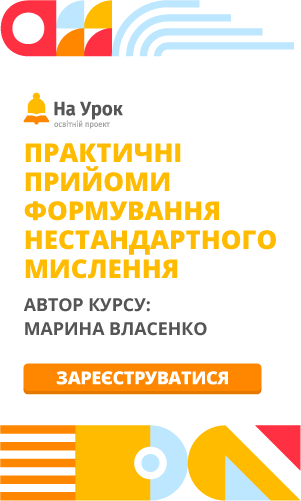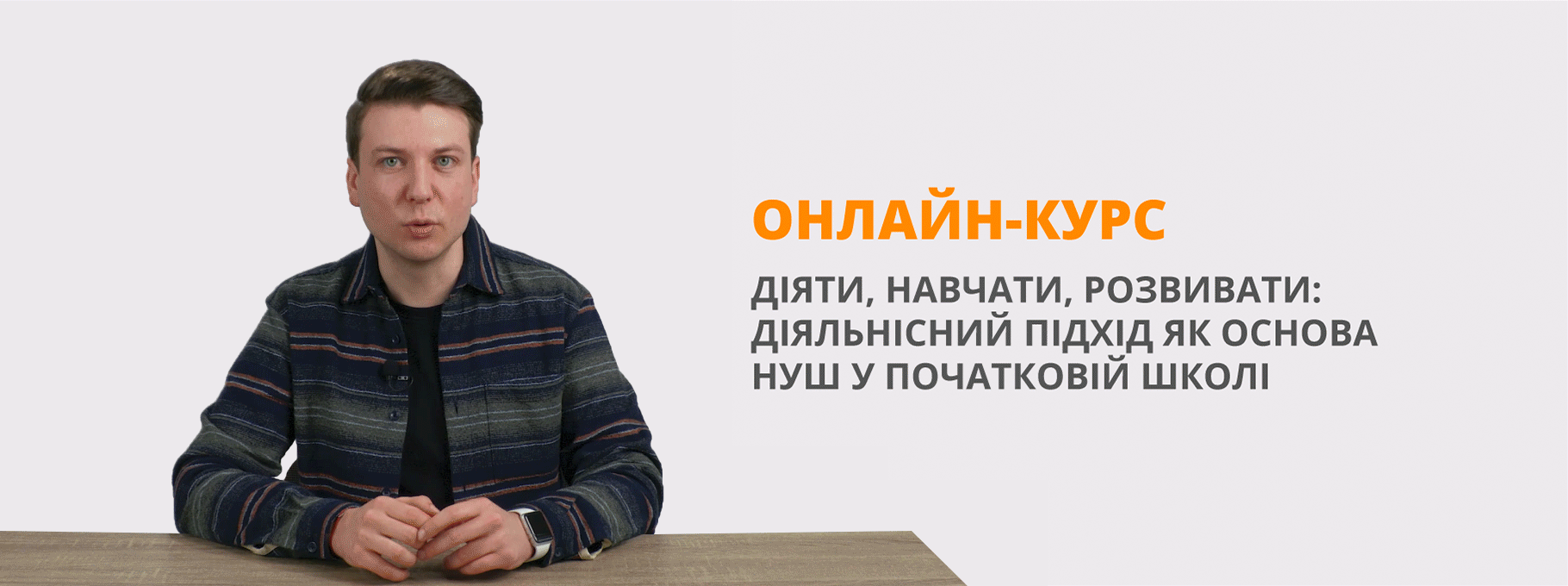Позакласний захід "English is everywhere!"
Виховний захід (1 – 5 forms)
«English is here, English is there, English is everywhere!»
T1: Good morning, good morning,
Good morning to you!
T2: Good morning, good morning,
We’re glad to see you!
T1: Hi, everyone in this hall!
T2: Welcome to our party dedicated to learning English language!
T1: Today we start the week of English in our school.
T2: So, the week plan is following:
Day 1: _________________________________
Day 2: _________________________________
Day 3: _________________________________
Day 4: _________________________________
T1: It’s not a secret that English is the language of politics, sport, science and computer technologies, business and international communication.
T2: It is official language of the United Nation Organization, Olympic Games, Miss Universe Competition and Eurovision.
T1: To your attention some more interesting facts about English.
T2: Okay, do you know that …?
(Video “Interesting fact about English language”)
T1: One of the most basic topics of conversation in England is the weather.
T2: It seems like a discussion that you can't get away from, because there the weather is so changeable…
T1: The same with us, I suppose
T2: That’s why let us talk about weather a little bit!
T1: Whether the weather be fine
T2: Or whether the weather be not.
T1: Whether the weather be cold
T2: Or whether the weather be hot.
T1: We’ll weather the weather
T2: Whatever the weather
T1: Whether we like it or not.
P1: It is sunny, it is hot.
Play with friends outdoors a lot. (Slide)
P2: It is raining, it is wet.
Stay at home with your pet. (Slide)
P3: It is frosty, it is cold.
Do not shout, do not scold. (Slide)
P4: When it’s windy,
When it’s cool
Do not swim in the pool. (Slide)
P5: Sun, and rain, and mud and snow,
In the picture I can show. (Slide)
P6: Fog, and wind, and frost, and ice,
All the seasons are very nice. (Slide)
(Song “What’s the weather, what’s the weather?”)
T1: What’s the weather like today?
Is it…?
(Pupils’ answers)
T2: What weather do you like?
(Pupils’ answers)
T1: Does it depend on seasons?
T2: What seasons do you know?
(Pupils’ answers)
1.
Spring is green,
Summer is bright,
Autumn is yellow,
Winter is white
T1: Now, you are going to guess the riddles! (Slide)
P7:
The trees are green
Blue sky is seen
White winters days gone away
The world looks new and gay. (Slide) SPRING
2.
This is the season
When flowers are bloom,
When nobody likes
To stay in the room.
This is the season
When the birds make their nest.
This is the season
We all like the best.
(Song “Clementine”)
3.
The snow is falling
The wind is blowing
The ground is white
All day and all night. (Slide) WINTER
4.
Come to the garden
And play in the snow
Make a white snowman
And help him to grow!
“What a nice snowman!”
The children will say.
“What a fine game
For a cold winter day!”
5.
December is the best of all.
Snowflakes dance, snowflakes fall.
People see the New Year in –
When December ends, it will begin.
6.
Grey is the sky
And the wind is chill;
Icicles hang
From the window-sill.
7.
It’s winter, it’s winter!
Let’s skate and ski!
It’s winter, it’s winter!
It’s great fun for me!
P1:
This is a season
When fruit is sweet
This is the season
When school friends meet.
What season is it? (Slide) AUTUMN
P2:
Yellow, red, and green, and brown
See the little leaves come down
Dancing, dancing in the breeze
Falling, falling from the trees.
P3:
The sun is shining,
The flowers are blooming
The sky is blue
The rains are few. (Slide) SUMMER
8.
This is the season
When nights are short
And children have plenty
Of fun and sport,
Boating, swimming
All the day
With merry song
On a sunny day.
T1: Children, what do you like to do on a sunny day?
T2: Of course, play!!! Let us just have fun now!
(Video-Song “Head, shoulders, knees and toes”)
T1: Kids, tell us please, what animals did you see in this video?
- Squirrel…
(Pupils’ answers)
T2: Good, and what other animals do you know?
(Pupils’ answers)
T1: Listen attentively to the poems and tell us in Ukrainian what animals you noticed.
9.
Little mouse, little mouse,
Where is your house?
Little cat, little cat,
I have no flat.
I am a poor mouse,
I have no house.
Little mouse, little mouse
Come into my house.
Little cat, little cat.
I cannot do that
You want to eat me.
10.
I like dogs, all dogs.
Big dogs and small dogs
Black dogs and white dogs
But I like best as you can see
The dog who likes to play with me.
11.
One little chicken with yellow feet.
One little chicken with tail so neat.
One little chicken stand up and tall
Mummy-hen loves them all.
T2: So, what animals have the children just named?
(Pupils’ answers: cat, mouse, dog, chicken, hen)
T1: You’re right! Great job! Now tell me, please. What does the hen usually bring to us?
(Pupils’ answers)
T2: But do you know who brings the eggs for Easter?
(Pupils’ answers: Easter Bunny or Easter Hare)
T1: Quite right! Easter Bunny brings eggs to English children for Easter… Great holiday Easter! How do we call it in Ukrainian?
(Pupils’ answers: Пасха)
T2: Easter in Britain has a lot of old traditions and customs. To your attention some information about five special days of Easter in Britain.
T1: Maundy Thursday is Thursday before Easter. On this day the Queen Elizabeth II gives money in red and white purses to poor people. This tradition is very old. (Slide)
T2: After Maundy Thursday comes Good Friday. People do not go to work. Britons bake and eat hot cross buns. (Slide)
P4:
Hot cross buns!
Hot cross buns!
One a penny,
Two a penny,
Hot cross buns!
Give them to your daughters,
Give them to your sons.
One a penny,
Two a penny,
Hot Cross Buns!
T1: On Holy Saturday people prepare for Easter Sunday. (Slide)
T2: What do you know about Easter? The word “Easter” comes from “Eostre”, the Anglo-Saxon goddess of spring. On Easter Sunday millions of people celebrate Christ’s resurrection. (Slide)
P5:
Easter is the time of joy
For all people, girls and boys
Joyfully today we sing:
Jesus is arisen King.
T1: What do they say on this day? Christ is risen! — He is risen indeed! How do we say this in Ukrainian? Христос Воскрес! — Воістину Воскрес! (Slide) What do we sing on this day? (Pupils’ answers)
T2: Do you know when is Easter? (Pupils’ answers) Easter is celebrated on the 1st Sunday after the full moon in spring. That’s why it’s a different date each year. (Slide)
T1: On Easter Sunday many families go to church. In Britain churches are decorated beautifully with different flowers, especially white lilies. The white lily represents love and hope. (Slide)
P6:
Easter Everywhere
Rabbits soft and cuddly
Baby chickens, too.
Easter eggs for baskets
White and pink and blue.
Easter cards of greeting,
Music in the air,
Lilies just to tell us
It’s Easter everywhere.
T2: On Easter Sunday English people eat a traditional big dinner with roast lamb, potatoes and vegetables. They also give each other chocolate Easter eggs. (Slide)
T1: English children believe that Easter bunny brings Easter eggs. (Slide)
P7:
Easter bunny soft and white,
Hopping quickly out of sight.
Thank you for the eggs you bring
At Easter time to welcome spring.
Yellow eggs and blue and red,
In the grass and flower bed.
T2: The day after Easter Sunday is known as Easter Monday. It is also a holiday in Britain. On this day children play “egg rolling” and “egg hunting”. (Slide)
T1: It is a kind of sport. Two weeks holidays begins in English schools. Now it’s time to play (Slide) (Pupils from 1-4 forms). Every one of you should find hidden Easter eggs here in the hall. Everyone should find at least one egg.
(Children’s play. Music)
T2: Your next task will be to roll the eggs from one side to the other. You are united in 2 teams. Which team is the first – is the winner.
T1: Ready! Steady! Go! (Children’s play. Music) So, which team is the fastest, 1st or 2nd ? Great! Make applause! Kids, are you having fun?
P1:
Easter brings Fun,
Easter brings Happiness,
Easter brings God Endless Blessings,
Easter brings fresh love,
Happy Easter to You
T2: To celebrate the arrival of spring, Easter parades often take place on Easter Sunday afternoon, where people can wear new clothes as a sign of the changing seasons, and competitions are held to find the best Easter bonnet. Traditionally, large Easter parades are held in Battersea Park, London. (Slide)
T1: Another symbol of Easter is an Easter Tree. There are 12 eggs on the Easter Tree. Can you guess why there are exactly 12 eggs? Because there are 12 months in a year. People walk around the Easter Tree and hope that each month of the year will be happy for them. (Slide)
T2: Now, it’s time to make our own Easter Tree!
- Логічним завершенням нашого свята вважаємо створення нашого власного Пасхального дерева, тут у цьому залі.
- Попросимо маленьких учасників нашого свята підійти сюди і повісити Easter egg на дерево.
Egg Hunt (Song) (to the tune of “Clementine”)
Easter morning, Easter morning,
Easter morning dawning fine
Have to find the Easter eggs now,
I’ve already picked up nine.
Fill the basket, fill the basket,
fill the basket every time
Candy eggs and jelly beans are
tucked behind each growing pine.
Bend and scramble, bend and scramble,
bend and scramble, reach and climb.
Find each hidden Easter treat now,
pick them up and they’ll be mine.
See them glow and see them glisten,
see them glow and see them shine.
Join me with my Easter candy and
together we will dine.
T2: Now let’s sing together!
(Song “If you’re happy”)
T1: Thanks for attention! See you tomorrow! (See you!)


про публікацію авторської розробки
Додати розробку
